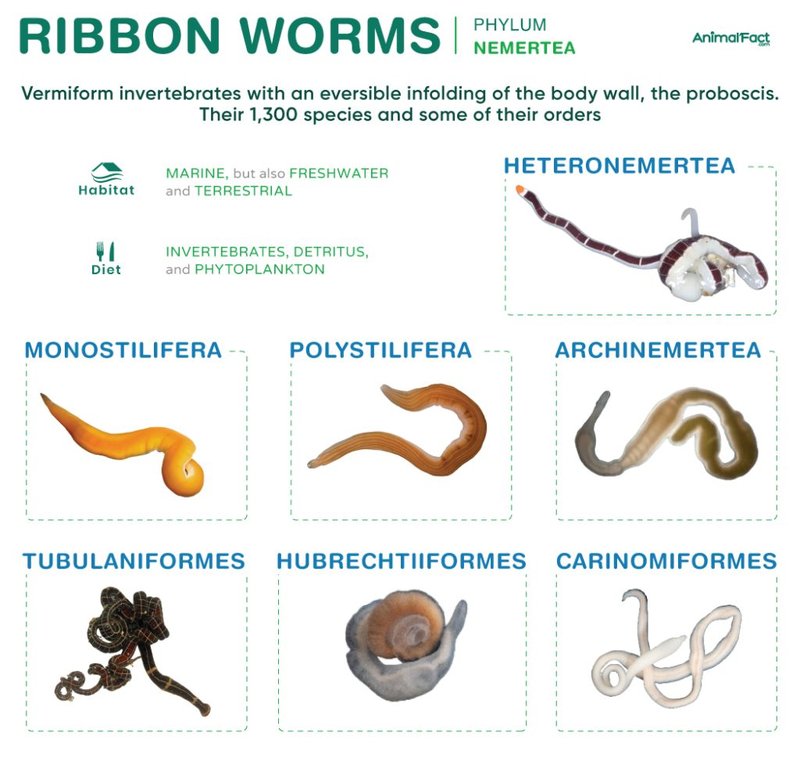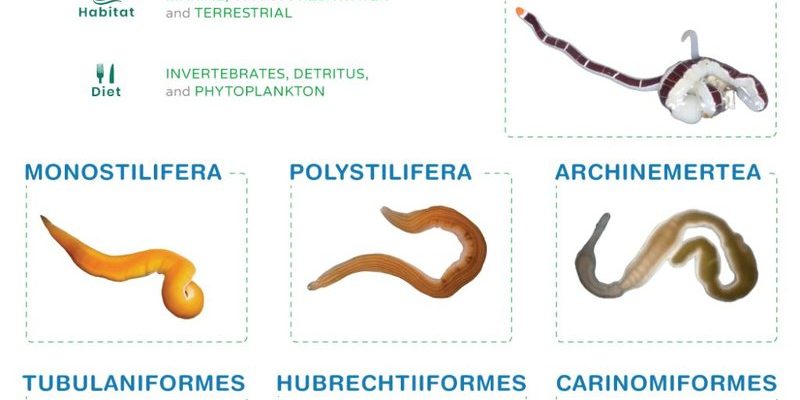
Some folks might even imagine these creatures as little sea snakes due to their elongated bodies. Others think they’re harmless garden pests. The reality is that ribbon worms are complex organisms that have a lot to teach us about marine life. Let’s dive into some of the common misconceptions surrounding these intriguing invertebrates, clearing up the confusion and maybe even sparking a little curiosity along the way.
1. Ribbon Worms Are Just Ordinary Worms
You might be surprised to find out that ribbon worms are actually quite different from your standard earthworm. While earthworms belong to the phylum Annelida, ribbon worms are part of the phylum Nemertea. This distinction isn’t just a technicality; it reflects a wide range of differences in anatomy, behavior, and habitat. For starters, ribbon worms can be incredibly long—some species stretch more than 30 meters!
In terms of movement, ribbon worms often swim or glide smoothly through their environment, thanks to a soft, muscular body. Unlike earthworms, which burrow through soil, ribbon worms mainly inhabit marine environments, where they can be found in tide pools or burrowing in sandy substrates. So, while they may share a name and some general characteristics, ribbon worms are far from ordinary!
2. All Ribbon Worms Are Venomous
One of the biggest misconceptions about ribbon worms is that all of them are dangerous due to their venomous nature. While it’s true that many ribbon worms possess venom and use it to hunt prey—like small fish and crustaceans—not all species are harmful to humans. In fact, most ribbon worms are rather shy and avoid confrontation.
Many species of ribbon worms use sticky secretions rather than venom for feeding. They catch their prey by wrapping around them, similar to how a python constricts its meal. So, if you ever spot one while exploring the tide pools, there’s no need to panic. Just admire their unique beauty from a distance, and you’ll appreciate them much more!
3. Ribbon Worms Are Only Found in Saltwater
It might surprise you to learn that not all ribbon worms call the ocean home. While many species thrive in saltwater environments, there are also freshwater ribbon worms. These varieties can be found in lakes, rivers, and ponds across the globe.
The habitat of ribbon worms can influence their behavior and diet. Freshwater species, for instance, may feed on different organisms compared to their saltwater cousins. This adaptability makes ribbon worms a more diverse group than many people realize. So, if you’re exploring freshwater ecosystems, keep an eye out—you might spot one!
4. Ribbon Worms Are Ineffective Predators
Here’s the thing: ribbon worms are far from ineffective as predators. They have a fascinating feeding mechanism that sets them apart from many other creatures. Ribbon worms possess a specialized structure called a proboscis, which they can extend rapidly to capture prey. It’s like having a super-fast fishing line that retracts once it snags a meal.
This adaptation allows them to take down prey much larger than themselves. With a mix of speed and stealth, they’re much more effective hunters than many give them credit for. If you think about it, this unique method of capturing prey is a bit like a magician pulling a rabbit out of a hat—except in this case, it’s a quick snack!
5. Ribbon Worms Are All the Same Color
If you think ribbon worms are simply long and dull-looking, think again! These creatures come in various colors and patterns, often bright and eye-catching. Some species may display vivid reds, greens, or blues, while others could sport intricate patterns that help them blend into their surroundings.
This coloration can serve multiple purposes: it can attract mates, warn potential predators, or provide camouflage. For instance, a brightly-colored worm might be telling predators, “Hey, I’m toxic!” So next time you see one of these creatures, take a moment to appreciate the colorful diversity present in the ribbon worm family.
6. Ribbon Worms Are Not Important to Ecosystems
Many might think of ribbon worms as just another odd marine creature that doesn’t play a significant role in its environment. However, that couldn’t be further from the truth! Ribbon worms often serve as both predators and prey in their ecosystems, contributing to the food web.
They help control populations of small invertebrates and fish, maintaining a balance in their habitat. Additionally, as they consume and recycle organic material, they play a role in nutrient cycling. This means that even though they might seem like simple creatures, ribbon worms are anything but unimportant in their ecosystems.
It’s easy to let misconceptions cloud our understanding of ribbon worms. By taking the time to learn about these amazing creatures, we can appreciate their unique roles in the ecosystem. Remember, ribbon worms are not your typical squiggly worms, and they come with a wealth of surprises. Whether they are capturing prey with their agile proboscis or showcasing vibrant colors, these striking invertebrates remind us that nature is full of wonders waiting to be explored.
So next time you’re near the shore or at a freshwater stream, keep an eye out for ribbon worms. Who knows? You might just discover a fascinating world right beneath the surface. Embrace the curiosity, and you’ll find that even the smallest creatures can have the biggest stories to tell!

